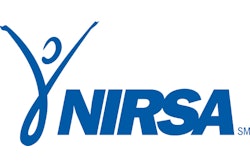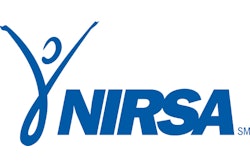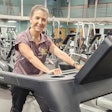
Eight years ago, in the wake of Hurricane Harvey in Texas and Hurricane Irma in Florida, I predicted that demand for community recreation centers that double as temporary shelters would rapidly increase.
In subsequent years, as the climate became more volatile, that trend has played out. Public recreation facilities — with spacious gymnasiums and locker rooms — are natural places for housing people temporarily displaced by weather events. Some rec centers also have kitchen capabilities to distribute meals.
And increasingly, sheltering in recreation centers isn’t just for disasters that occur in areas prone to hurricanes and tornadoes. During extreme cold and heat, they are popular locations for warming or cooling centers. In January, for example, City of Cincinnati officials converted the Over-The-Rhine Recreation Center into an emergency cold weather shelter during that area’s coldest January in a decade. An estimated 200 unhoused community members received essentials like free food, hats and blankets, transportation and even mental health services on a daily basis for the better part of a week. The recreation center also extended its hours during this time.
At the other end of the extreme, the Denver Parks and Recreation Department opened all of its recreation centers as daytime cooling centers during regular operating hours when a heatwave last summer sent temperatures soaring into the triple digits. Each facility offered access to drinking water, restrooms and places to sit.
Sheltering is a standard conversation we now have with clients regarding all recreation projects my architectural firm undertakes. Most clients, at a minimum, opt for electrical systems designed so that at least key parts of the building (usually the lobby, gymnasium and locker rooms) can be powered by a portable generator, if necessary. They often do this even if a permanent generator is not specified for the project.
When designing a new rec center, municipalities should consider up front if and how the project could potentially fit into the community’s overall emergency operations plans. Meet with local officials and nonprofit agencies during the design phase to find out how the facility could address such needs, and be sure to include funding in the conversation.
Other design and operational considerations for facilities with a high likelihood of being called into action as a temporary shelter include:
• Increasing the number of showers and restrooms to exceed minimum code requirements.
• “Oversizing” common areas and including storage space for cots.
• Keeping protective floor coverings readily available, as well as planning to remove fitness machines and other equipment from spaces designated as sheltering areas.
• Developing an efficient in-house laundry operation to keep up with additional demand for clean towels by the sheltered.
Additionally, staff should be prepared to clean and return to normal all areas used by temporarily displaced visitors so regular operations can resume. And, perhaps most importantly, have a staffing plan in place to operate as a shelter on a 24/7 basis for an undetermined amount of time.
Brinkley Sargent Wiginton is wrapping up a municipal project in Deer Park, Texas, near Houston, that includes a large generator that can back up the entire facility, giving it the capability to potentially house hundreds. We also are the recreation architect teamed with Gignac Architects on a public recreation center project in Port Aransas, Texas. Already required to meet stringent high-wind standards because of its location on the Gulf coast, the facility also will include a permanent generator and no rooftop equipment that could potentially blow off. All mechanical equipment is internal, too, except for the condenser (which is in a protective enclosure).

Such conscientious design decisions were made because of a willingness by municipal leaders to be prepared to assist individuals and families in the communities they serve during times of need. But the logistical challenges of planning for and operating in an emergency can become matters of life and death.
As we head into hurricane season and what could be another record-breaking summer of scorching weather, it’s important to make plans now to help your community weather a crisis.





































